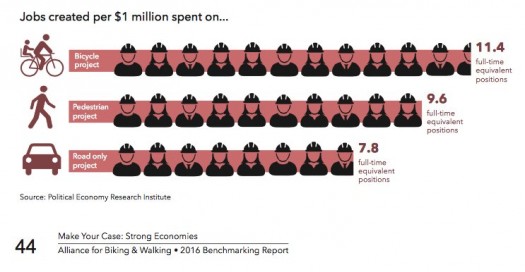Posts Tagged ‘bikeable’
Benchmarks: Places on the move measure up
As spring tempts us to pick up the pace of our outdoor activities, it’s clear that not all places have equal footing. Those well-positioned to draw us out into health-boosting active transportation are enjoying all sorts of benefits. City planners across North America are trying hard to even the playing field. The 2016 Benchmarking Report…
Read MoreWays to Fail at Form-Based Codes 04: Don’t Capture the Character
The other day, I was riding my bike from a deeply walkable, bikeable neighbourhood to a more auto-dominated environment, and I was struck again by the tactile response when you’re walking or biking through this change. In the walkable neighbourhood, fellow cyclists were in the streets or in bike lanes, mixing safely with the traffic-calmed…
Read MoreHealthy, or Unhealthy, by Design
A few months ago, we talked about how a great city can be like a great running buddy, calling us to venture outdoors into more active, satisfying lifestyles. The photo-essay accompanying that conversation was on the urbanity of Wilmington, North Carolina. Last week, we were in another North Carolina town, Fuquay-Varina, working to create just…
Read MoreChicken or the Egg: Who takes the lead on incremental suburban retrofitting?
A proposed Trader Joe’s in Boulder, Colorado, brought up an interesting question this week in a spirited exchange on the Pro-Urb urban issues listserv: In auto-centric places where streets and infrastructure lack any sense of meaningful pedestrian amenity, who should take the lead on turning things around? That is, should developers be required to build…
Read More

